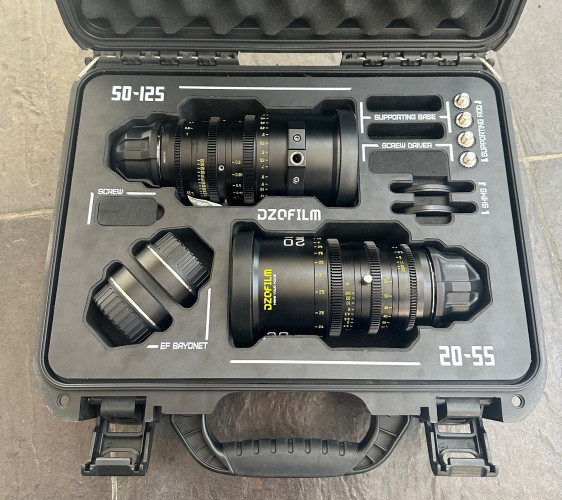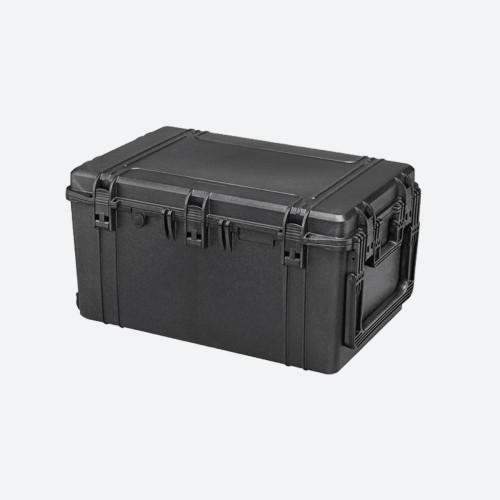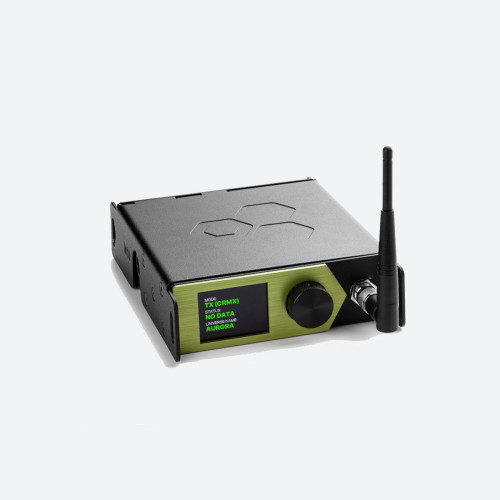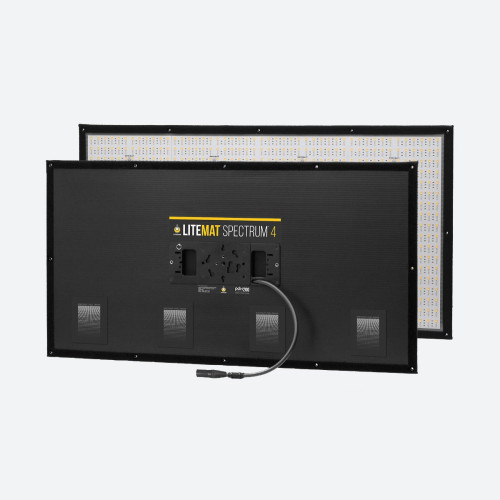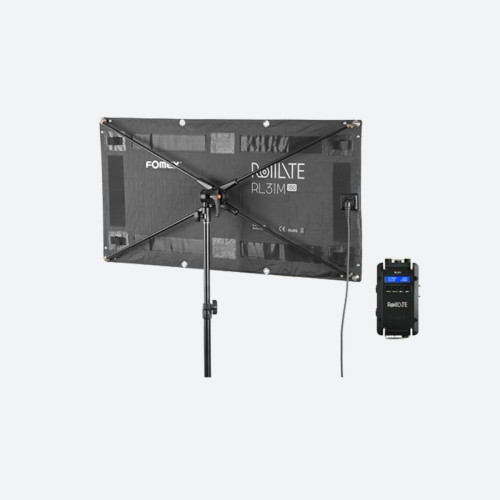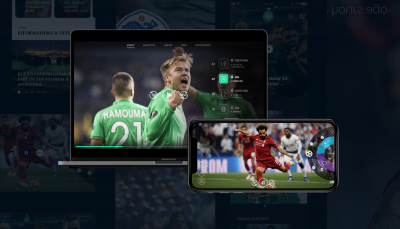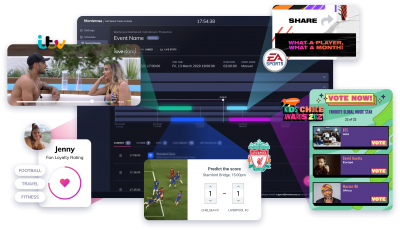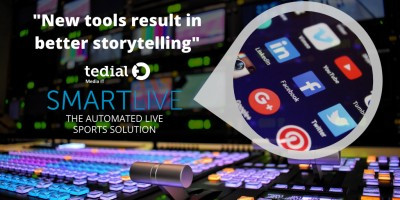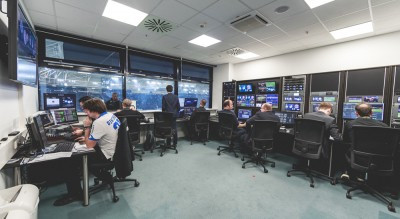Enabling the fans

Author: Bob Pank#
Published 1st July 2010
The days when a simple hotdog, a pint of beer, a score board and good lungs were the main ingredients of a great day at a football game are soon to be a thing of the past. Mike Arthur, general manager, sports and live events, at Harris Broadcast Communications, talks to TV-Bay Magazine about the advances in technology which will enable interactive fan experiences.
---------------------------
The experience of sports fans on location is a burning topic all over the world as next-generation technologies are enabling the rise of a new type of fan experience beyond the confines of physical location and time. Venues across the UK and Europe, inspired by recent multimedia deployments in stadia overseas, are exploring increasingly sophisticated ways of enhancing their visitors’ experience. “With leading sports bodies requesting specific features, including high levels of video integration, for facilities that wish to be involved in major tournaments for example, new challenges are arising for facilities management teams,” said Arthur. “But this evolution also opens the door for new possibilities for sports investors and sports fans alike.”
Fan experience varies across the world
The concept of supporter experience varies tremendously depending on the game in question and indeed on where the game is taking place. This is a crucial fact which will impact the decisions being made around technology investment for new and existing venues located in Europe.
In the United States, the sporting event has long been seen as a holistic experience due to the nature of the most popular sports there. American football, baseball, basketball and hockey are all played to a staccato rhythm with three-period plays for hockey or quarters for football, for example. In such cases, there are vast amounts of time where the fans’ attention is not focused on the actual game, increasing the importance of third-party stimuli in the experience and opening a whole world of external activities linked to the game. Super Bowl Sunday, the championship day of the National Football League, has become a major landmark in the calendar of North America, and commercial airtime for the broadcast is the nation’s most expensive in the calendar year. Arthur explains: “Large video boards, sophisticated sound systems and speakers enable the creation of increasingly complex content which can be delivered on-site during the event, during time-outs or during period breaks. In some respects, the North American market has led the way in the output of content creation for an experience where the fan is more physically passive on location.”
In Europe, the most popular games include rugby and football, which are for the most part very fluid games. With only two 45-minute periods and a 15-minute break, football does not allow the fans as much time to take their eyes away from the pitch for most of their time in the stadium, for fear of missing a crucial event. Arthur comments that “traditionally the fan experience in Europe has focused solely on the actual match and on the stimuli linked to crowd momentum at the game. Fans are very physically invested in the game while it’s happening. This means that most of the game-related marketing, which is the forte of European tournaments, is geared towards the pitch itself, with third-party stimuli acting as important brackets to the actual event.” He gives the example of a recently refurbished stadium in London, home to a renowned Premier League football club. That stadium pioneered the creation of a network of unique content accessible solely inside the stadium, meaning fans have an extra motivation to arrive early and stay on after the game.
To deliver augmented fan experience, fan enablement is the next step of the process. Enabling the fans means making them an active part of the experience by not only providing content in and around the venue, but also by providing access to content while at the game on an iPhone or iPad, for example. This will allow the fans to check for statistical information on the player who just scored the winning goal or watch a replay from a different angle, taking their participation in the game to a higher level. In essence, fan enablement makes the fan an active part of his own experience inside and outside the stadium.
The technical complexities of augmenting fan experience
Stadium design is still very much focused on the pitch, the bowl and the live-viewing experience relative to seat locations, but the evolution of technology has demanded that designers dedicate plenty of thought to the network backbone and the complementary technology solution architecture. The network and fibre connections are as crucial as the stadium design nowadays, as the video control room takes centre stage. That means that as a whole, stadium design projects need a broad mix of expertise from the fields of IT, broadcast, audio-visual and digital out-of-home, to name but a few.
Last year, Harris engaged with the National Basketball Association’s Orlando Magic to create a broadcast and IT media workflow in the team’s new arena. The new solution allows the Magic to address individual displays in the venue with replays, highlights, local messaging and out-of-home advertising in stunning HD images. The technology roll-out included an HD video production, distribution and IPTV system integrated with digital signage, which allows the Magic to control individual displays around the arena. This project represented a departure from the typical workflow design common to broadcast projects, and it is a great example of how expertise and technology from a number of vastly different areas can be combined to generate powerful results in the industry of sports.
The Broadcast Communications business at Harris is a worldwide leader in broadcast technology. “Harris is unique in that we have the triple punch of network design and deployment capabilities, we are hardware agnostic, and we have robust content capabilities,” comments Arthur. The Harris Broadcast business provides a vast array of solutions to the broadcast industry including the creation and management of content, the transfer of media assets, the programming and scheduling of media files and the provision of graphic and branding solutions. The Harris Broadcast offering also includes broadcast-quality digital signage content management and scheduling hardware and software. Other parts of Harris can provide battlefield-tested wifi solutions and distributed antenna equipment, and for motor sports, they have technology such as encoders which can be used in severe meteorological conditions to push content to smart phones located away from the tracks. And, finally, the Harris IT services (HITS) group has long-standing expertise in the provision of managed services from the Harris Network Operations Centre in Florida.
“We move high-quality video efficiently without needing to partner — we have it all in-house. As fan enablement gains momentum around the world, we have been able to provide expertise stemming from our various divisions.”
Commercial considerations
There are, of course, sound commercial considerations supporting the move to a more interactive fan experience. “For most sports organizations, approximately 20 percent of their fan base represents 80 percent of their revenue — that’s consistent across the globe,” states Arthur. “Increasing fan enablement and augmenting the fan experience could potentially grow this revenue to around 25 percent; therefore, we impact their top and bottom lines. Through the integration of new types of technologies the team can not only deepen their relationship with the core audience, but also turn it into revenue.”
Ultimately, of course, it is content — and the ability to move that high-quality content around facilities — that is king for creating a high-impact fan experience and allowing fan enablement. Information accessible anywhere, any time — transcending the boundaries of the actual sports event. Arthur concludes: “What I’m most excited about is that the passion for sport can only be enhanced by these technical advances. Ultimately, fan enablement means that fans can consume their favourite sport in whatever way they see fit and in more personal ways than ever before. I suppose it could be described as individually tailored sport.”
-----------------------------------------



